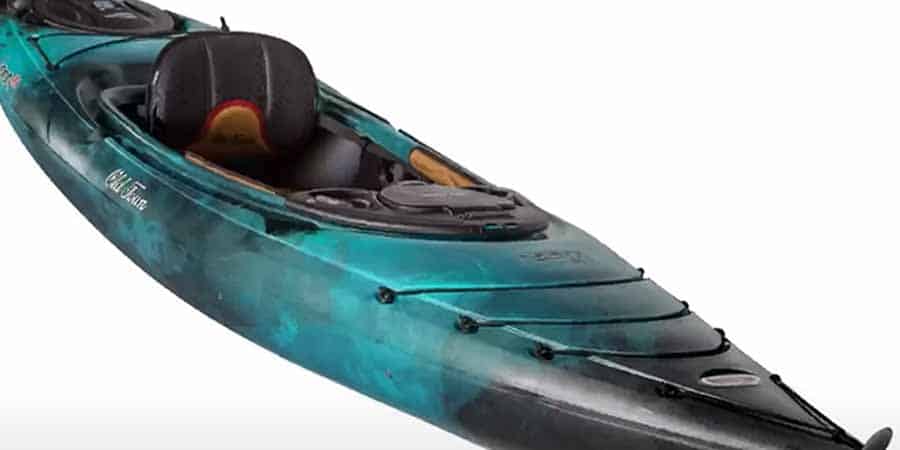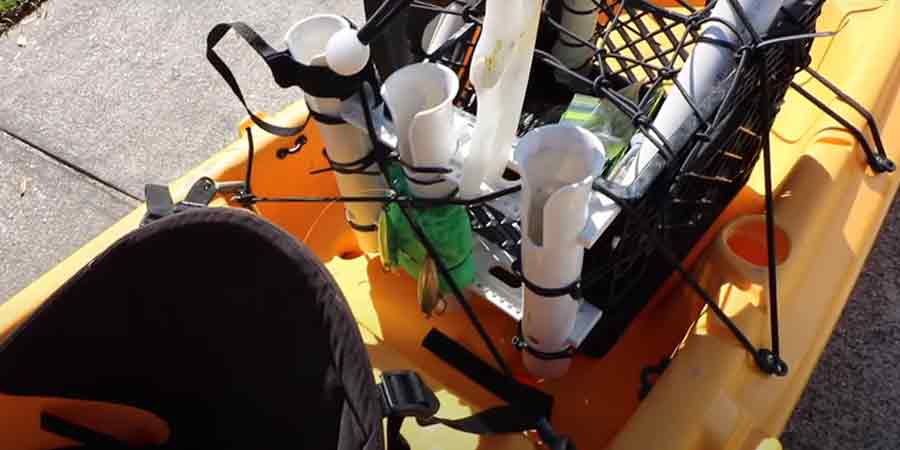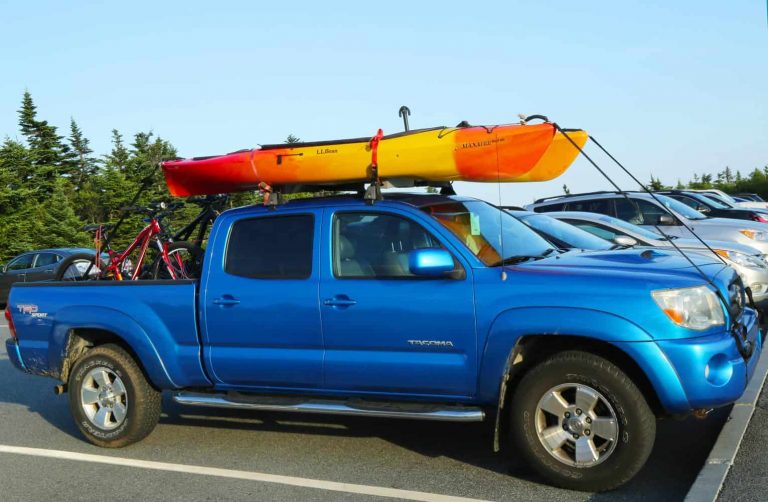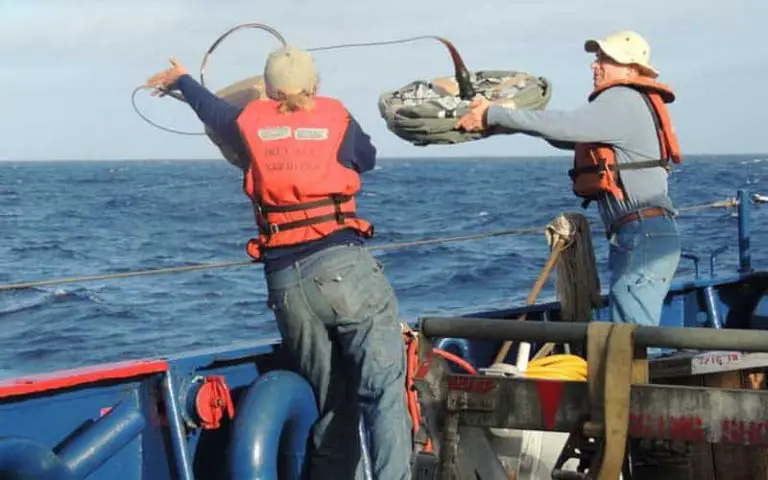Does Kayaking Have a Weight Limit?
[What Size Kayak You Need]
![Does Kayaking Have a Weight Limit? <br>[What Size Kayak You Need] Does kayaking have a weight limit FI](https://topnotchoutdoor.com/wp-content/uploads/2021/07/Does-kayaking-have-a-weight-limit-FI.jpg)
Share this article:
TopNotch Outdoor is independent – we research, test, and rate the top products to help you make the right buying choice. We sometimes use affiliate links and may receive a small commission on your purchase. Learn more…
To burst your bubble…
Yes – kayaking has a weight limit, and it’s one of the essential factors to consider when purchasing a kayak.
For safety and comfortable paddling, a kayak varies depending on its weight limit. Some are built larger than the others – means that the larger the kayak, the more weight it can support. Does kayaking have a weight limit?
So what do you need to consider?
To ride a kayak, you need to consider your body weight, the weight of your gear, and the weight of your yak.
Here’s the thing…
Your weight should be less than the weight capacity of your kayak. Let’s say, for example, you weighed 300 pounds, and the kayak weight limit is 300 pounds.
Can you ride the kayak?
Of course, you can! But the question is…
Can the kayak float while you’re in it? – let’s see!
You’re about to know the following:
Let’s get our kayak minds rolling!
So what is meant by a kayak’s weight limit?
Kayak Weight Limit and Maximum Weight Capacity

A kayak weight limit or simply permitted weight is the maximum capacity a kayak could support and still float.
It is normally assigned by manufacturers to aid paddlers and anglers in knowing what kayak suits their weight. In the past, kayak manufacturers failed on this due to insufficiency in weight capacity standardization. But now, they’re letting kayakers learn about performance and safety ratings.
In addition…
Aside from body weight, a kayak’s maximum weight capacity also determines the number of gear a kayaker can bring on the kayak.
Less is good, but more than the required limit – you’ll sink.
Let’s go back to our example: A paddler weighs 300 pounds, and the weight limit of the kayak is 300 pounds. Can the kayak support the paddler?
The answer is…
…yes, the yak can support the paddler and will float in the water. However, since it’s carrying a weight equal to its weight capacity – there will be an extra drag, reduced maneuverability, and high water instability.
And the worst-case scenario is…
…there’s a high chance that the water will come through the scuppers, resulting in sinking after some time.
We don’t want that to happen…
So you need to buy a kayak that is suitable for your weight – but how will you know this?
Paddler size in relation to weight limit?

The kayak weight limit is given as the maximum weight capacity and determines how much weight it can support and still float.
If you’re having a hard time looking for a kayak that suits your size…
You can use this formula: W = listed weight capacity – 25% to determine the maximum weight limit that your kayak can support.
If you weigh 225 pounds, what’s the ideal kayak for you?
You should look for a kayak with a weight capacity of around 300 pounds. But bear in mind that the weight of your gear is not yet included in this calculation. If you include gear and other equipment – look for a yak with a weight limit of around 350 pounds.
Not only that…
To achieve peak performance and a more stable kayaking experience, use this formula – W = listed weight capacity – 50%. In this way, you can have a more efficient and stable time in the current of waters.
Will the water not come through the scuppers?
Does the weight limit mean a dry boat?

Not necessarily…
Let’s say, for example – you bought a kayak with a weight limit of 350 pounds. The maximum weight it could support with gear is around 175 pounds. Thus, your weight should be 150 pounds, while you ought to bring 25 pounds of gear and other necessary things in your kayak.
While it is more stable and efficient – less water will get through your kayak, so you don’t need to worry at all.
But it still depends on the water current in the area you went kayaking…
For instance, you and your friends went to flat waters and slow-moving rivers where you’ll encounter calm water. This body of water does not have rapids, waves, and excessive current…
…as compared to whitewater kayaking, you will fight with the weir, rapids, and water current. Here, you can do stunts like capsizing and roll, which can be quite dangerous and surely will not just wet your kayak but yourself as well.
Thus, your weight limit doesn’t mean a dry boat since you will enter the water – expect the unexpected.
Regardless of the body of water where you will kayak – you still need to consider your weight and the weight capacity of your yak.
In this way, you will have a smooth flow in the water by not sacrificing maneuverability resulting in a more stable and efficient paddling.
Going for a kayak with the right weight limit

It is important to know the right weight limit before going for a kayak. In this way, you can decide and plan what to bring and what you don’t have to load in your yak.
Again…
Safety is a priority. Unless you’re confident on the right weight limit, don’t jump into your yak and compromise your safety and performance.
Thus, don’t forget to consider this important factor in purchasing or renting a kayak – maximum weight capacity!
It is super important to follow the maximum weight capacity that the yak requires. Otherwise, you’ll just inconvenience yourself and others on your trip.
But you’re overweight?
Outdoors are for every body weight. You don’t need to worry as long as you check your weight and the kayak weight limit. You will have an enjoyable kayaking trip just like everybody else.
Don’t forget that safety is always a priority!
What happens if you go over your kayak’s weight limit?

If you go over your kayak’s weight limit, you will have difficulty maneuvering your yak resulting in a loss of balance and stability.
Another worst-case scenario could happen…
You could overturn your kayak together with the equipment and gear you’ve brought in the water. Make sure that you’re mentally and physically prepared.
But to prevent this from happening, make sure you will not go over the kayak’s weight limit. Thus, the overloaded kayak is a big no.
Just bring the right gear and equipment for your trip – don’t go overboard.
Average weight limit of kayaks?
Manufacturers display performance weight limit and safety weight limit to avoid confusion for kayakers. It tests and rates the kayak’s maximum weight capacity to support the paddler, given that it’s also loaded with gear and equipment.
Here are the different types of kayaks with suitable weight for you on the market:
Typical recreational kayak (200 – 300 pounds)
This type of kayak could carry 200 – 300 pounds designed for a flat water surface with no extremities of waves, rapids, and current. You might want to use this if you choose to be alone and have a quiet time with nature.
You might want to check out Sun Dolphin Aruba 10 for your reference.
Touring kayak (250 – 300 pounds)
Touring kayaks are designed for expedition or multi-day trips. Thus, they have a large storage capacity for all your gear. Unlike recreational kayaks, it’s suitable for high current water and stable even out in the open sea.
An example of touring kayaks is Perception Carolina 14 – check this out!
Sit on Top kayak (350 – 400 pounds)
Sit on top kayaks are fishing kayaks that you can easily sit and enter even if you experienced overturn when in the water. If your child wants to join you in kayaking, this is a recommendation. So, ready your fishing gear and fishing rod.
Check out Sun Dolphin Journey 10-Foot Sit on Top Kayak.
Tandem kayak (500 – 600 pounds)
Tandem kayaks are also recommended for families when you want to spend time with your child and other relatives. Of course, it’s wider compared to recreational kayaks.
Here are some top-notch tandem kayaks: Ocean Kayak Malibu.
Inflatable kayak (400 – 750 pounds)
Inflatable kayaks are recommended for those who are intimidated to go kayaking because of being overweight. It’s a good match for you! Go with the highest weight capacity that you can afford.
You might want to check the Intex Explorer 2-Person Inflatable kayak.
Can you increase the weight capacity of a kayak?
Short answer…
No, you can never increase the weight capacity unless kayak manufacturers devised a plan to increase its weight capacity.
As you’ve already known, increasing the weight capacity of our kayak has nothing to do with sinkers, float foams, etcetera.
Conclusion: Does kayaking have a weight limit
How much weight can a kayak hold?
Do your weight limits you from going on a kayaking adventure?
Worry no more!
Kayaking is for everybody. Whether you are an avid kayaker or a starter paddler. You can choose a variety of kayaks before going on a trip – fishing kayaks, sit on top kayak, tandem kayaks, inflatable kayak, touring, and recreational kayaks depending on your weight and preference.
Remember: Don’t forget to determine the maximum weight capacity of your kayak before purchasing or renting a yak. It’s for your safety.
You don’t want to have a hassle kayaking experience, right?
So bring only the necessary gear and equipment that fits your kayak weight capacity.
And if you’re still looking for the perfect kayak that will suit your size – no pressure.
Planning is necessary for this amazing leisure activity, so take your precious time to think.
While you’re at it – zip to Boat Priority and check out this amazing cooler that you can bring with you for your next kayaking trip.





![13 Cheapest Camper Trailers ([currentyear]) Under $10,000 13 Cheapest Camper Trailers (2024) Under $10,000](https://topnotchoutdoor.com/wp-content/uploads/2020/12/13-Cheapest-Campers-FI-768x432.jpg)
![Best Overland Campers [Updated] Best Overland Campers [Updated]](https://topnotchoutdoor.com/wp-content/uploads/2022/07/Overland-Camper-FI-768x480.jpg)